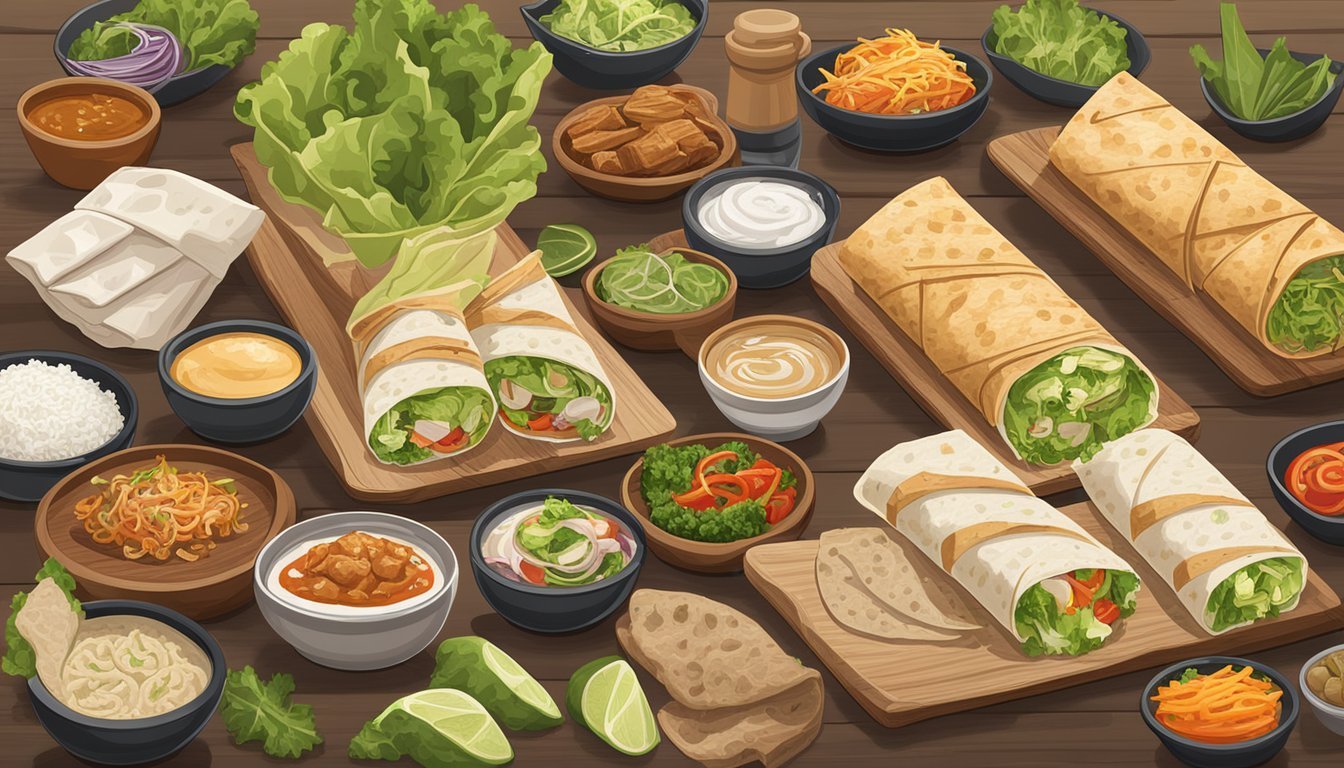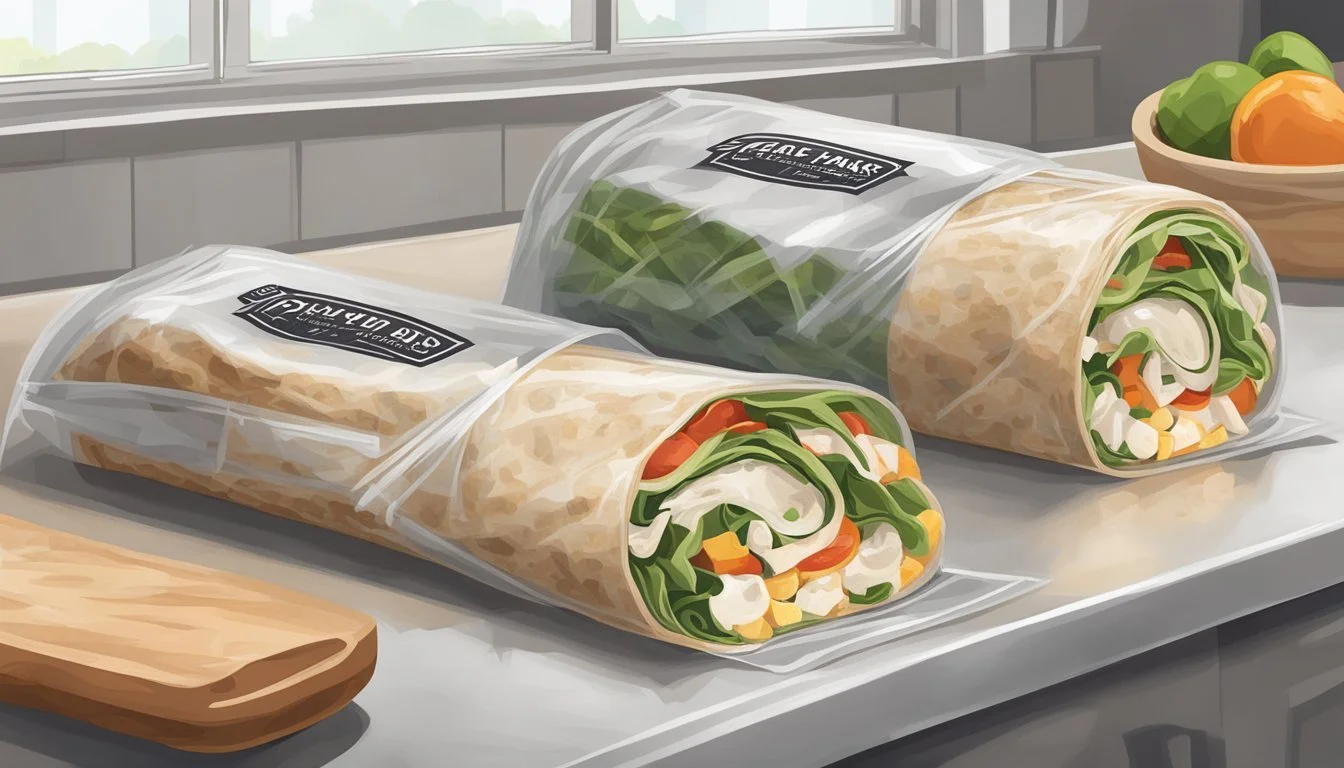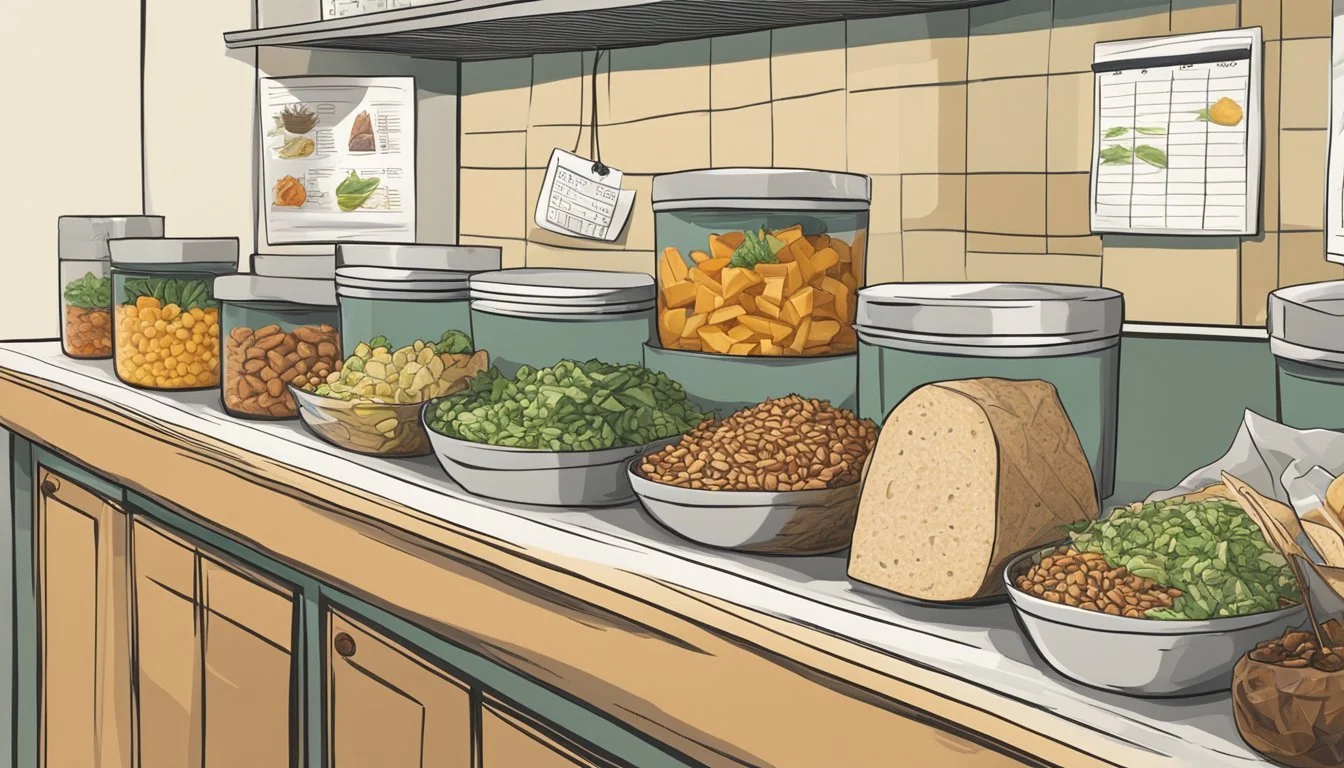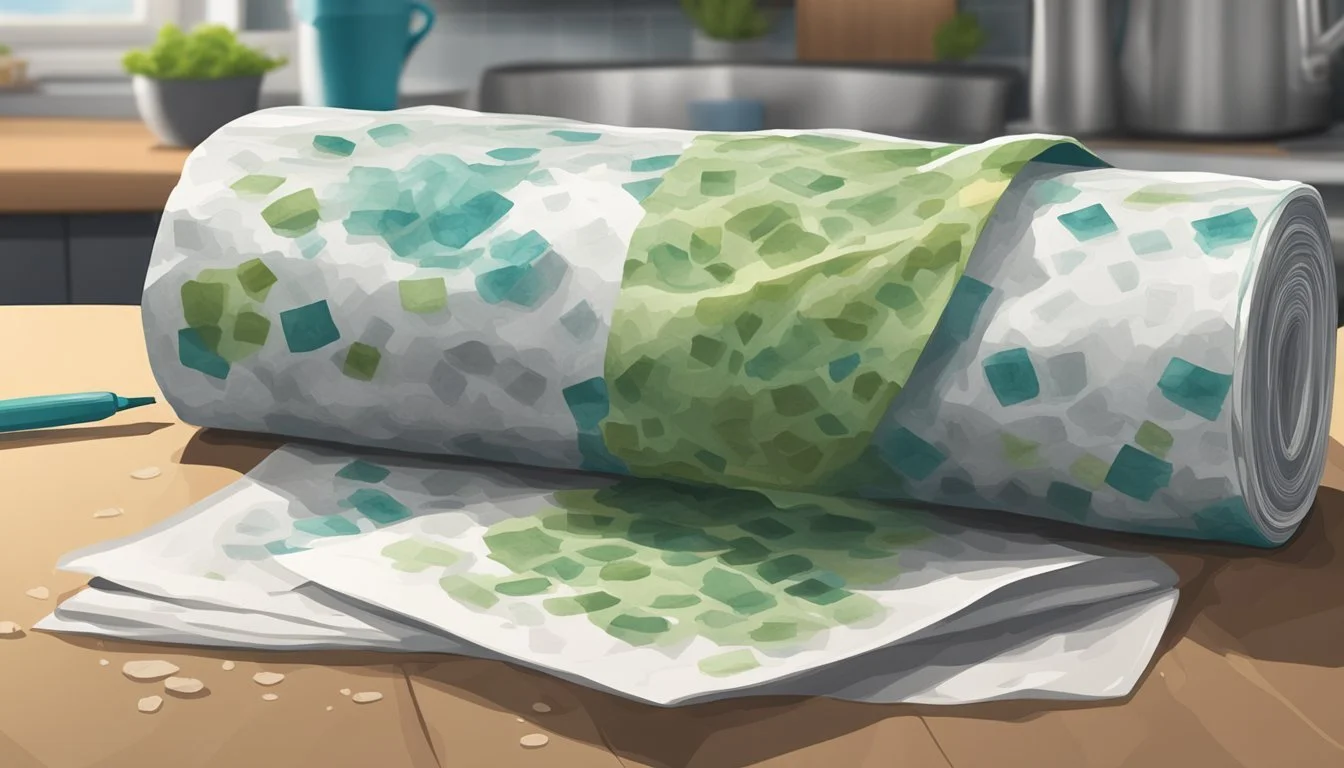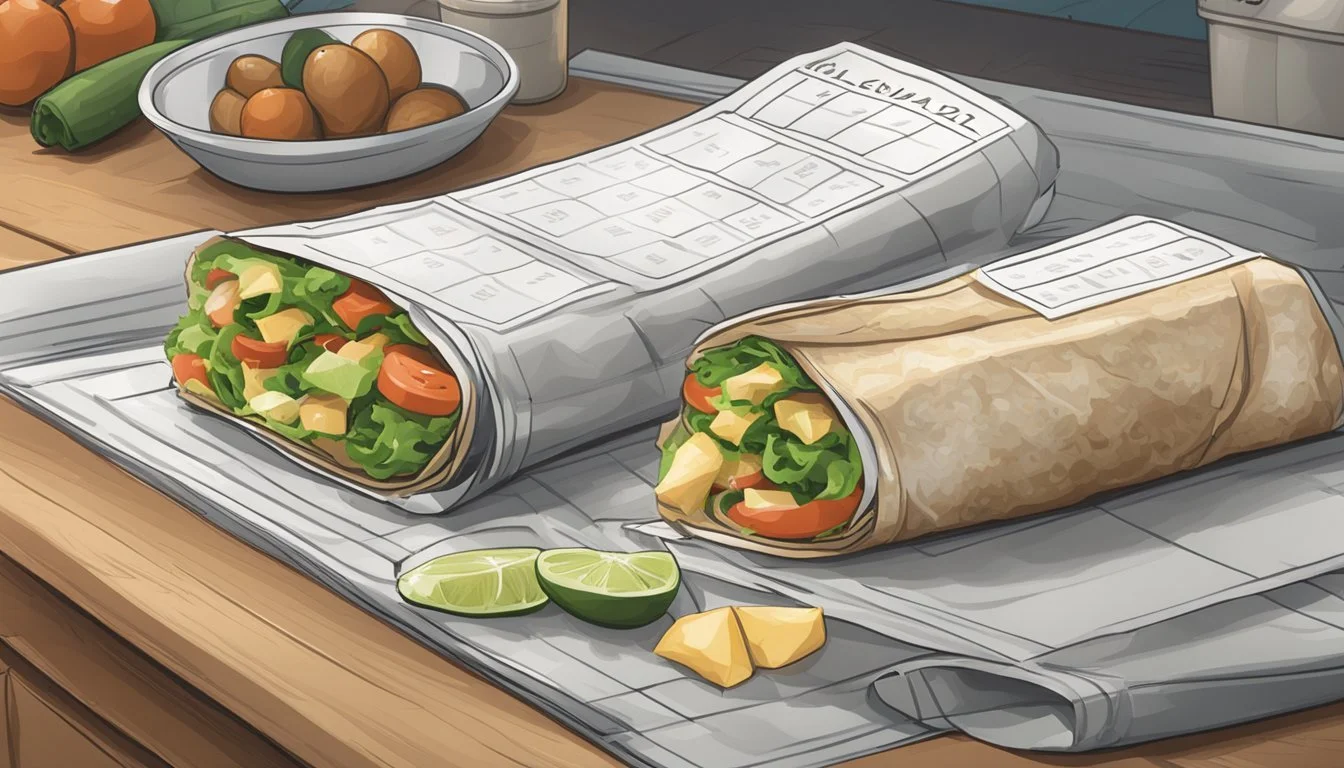How Long Do Freshly Made Wraps Last?
Shelf Life and Storage Tips
Understanding the shelf life of freshly made wraps is pivotal for both food safety and ensuring the enjoyment of their intended flavor and texture. Tortilla wraps, when freshly made, possess an appealing softness and pliability that make them a popular choice for a variety of meals. However, the freshness of tortilla wraps is ephemeral, and their quality begins to decline after they are prepared. The length of time freshly made wraps last is dictated by several factors, including the ingredients used, the method of storage, and the specific type of wrap.
Proper storage is essential to maintain the quality and safety of tortilla wraps. At room temperature, freshly made wraps typically remain consumable for up to two days. Refrigeration extends their shelf life, allowing them to last for approximately a week. For longer-term storage, freezing is the most effective method, as it can preserve the wraps for several months while retaining their quality. It's crucial to store wraps in an airtight container or wrap them securely to prevent exposure to air and moisture, which can hasten spoilage and degrade texture.
When considering food safety, it's important to recognize that the absence of spoilage signs like mold or an off odor does not necessarily mean the food is safe to eat. Hence, attention should also be given to the "best by" date provided by manufacturers, which indicates the last date they guarantee the product's peak quality. To ensure both safety and quality, consumers should rely on a combination of proper storage techniques, visual inspections, and adherence to recommended use-by dates.
Composition and Types of Wraps
Wraps are a versatile and popular choice for meals, made from different types of tortillas that vary in ingredients and nutritional content. Knowing the specific composition of these tortillas can help consumers choose wraps that align with their dietary preferences and needs.
Flour and Corn Tortillas
Flour Tortillas: Traditionally made from wheat flour, water, oil, and salt, flour tortillas are soft and flexible, making them ideal for a variety of wrap recipes. The use of wheat flour generally provides a higher gluten content which aids in the elasticity and strength to hold fillings. Typical flour tortillas contain the following:
Main ingredients: Wheat flour, water, oil, salt
Texture: Soft, pliable
Nutritional profile: Higher in calories and carbs than corn tortillas
Corn Tortillas: Made from ground maize flour, also known as masa harina, water, and lime, corn tortillas are widely used in traditional Mexican cuisine and are preferred for their robust flavor and firmer texture. They are a healthier choice due to their whole grain content, and they tend to be lower in calories and fats but higher in fiber compared to flour tortillas. Essential aspects of corn tortillas include:
Main ingredients: Masa harina (corn flour), water, lime
Texture: Firm and grainy
Nutritional profile: Gluten-free, lower in calories, and a good source of fiber
Specialty Tortillas
Spinach Tortillas: These are a colorful and flavorful variant of flour tortillas, often used for wraps to add visual appeal and taste. Spinach tortillas include spinach powder or puree as part of the ingredient list, offering a similar texture to regular flour tortillas with the addition of some vegetable content.
Main ingredients: Wheat flour, spinach powder or puree, water, oil
Nutritional profile: Similar to flour tortillas, with added vegetable benefits
Low-Carb and Wheat Flour Tortillas: Catering to health-conscious consumers, these tortillas substitute traditional wheat flour with whole wheat flour or other low-carb alternatives. The goal is to provide healthier wrap options that maintain a desirable texture while reducing the carbohydrate content.
Main ingredients: Whole wheat flour or low-carb alternatives
Nutritional profile: Higher in fiber, lower in net carbohydrates
Vegetarian Tortillas: Many tortillas by default are vegetarian, containing no animal products. However, some brands may incorporate lard or other non-vegetarian ingredients, so it is important for vegetarians to verify the ingredient list.
In short, the variety of tortillas available allows individuals to choose wraps that align with their dietary preferences, from low-carb and whole grain options to traditional flour and corn choices.
Storage Guidelines
The longevity of freshly made wraps depends on how they are stored. Proper storage methods can significantly extend their shelf life by protecting them from air and moisture, the two main culprits that deteriorate food products.
Refrigeration Method
In the refrigerator, one can store tortillas for up to a week to 30 days. To maintain their freshness and prevent drying out:
Wrap them in plastic wrap or place them in a resealable plastic bag.
Expel any excess air from the bag to lower the risk of mold growth.
Keep them at a consistent, cold refrigerator temperature to slow down spoilage.
Freezing Technique
When freezing tortillas, they can last for 2 to 3 months:
Allow them to cool to room temperature before preparing them for freezing to prevent condensation.
Separate them using parchment paper or aluminum foil to prevent sticking.
Place the stack in an airtight container or resealable plastic bag, ensuring all air is squeezed out to protect from freezer burn.
Label the bag with the freeze date to keep track of how long they have been stored.
Pantry and Room Temperature
For short-term storage:
Keep them in a cool, dry pantry away from direct sunlight.
They can be stored at room temperature in their original packaging, which usually provides sufficient protection for up to a week.
To extend this period slightly, one might tightly wrap them in aluminum foil or place them in a resealable plastic bag, although refrigeration or freezing is more effective for longer-term storage.
Shelf Life Factors
The longevity of freshly made wraps is influenced by several factors including how they are packaged, the environment in which they are stored, and sensory indicators such as odor and discoloration.
Packaging and Protection
Proper packaging plays a critical role in extending the shelf life of wraps. Wraps should be stored in airtight containers or tightly wrapped in cling film to protect against moisture and other contaminants. The printed date on commercial wrap packaging can offer guidance on expiration, but once opened or if the wraps are homemade, the storage method dictates their freshness. Condensation within the package should be avoided as it can promote mold growth.
Best practices for packaging:
Use cling film or airtight food storage containers.
Minimize air exposure to prevent drying out.
Avoid condensation which can lead to mold and water damage.
Environmental Variables
The environment where wraps are stored impacts their shelf life significantly. Refrigeration typically extends a wrap's life, keeping them fresh for about 5-7 days. On the other hand, pantry storage is only suitable for a short term, usually up to one week. For long-term storage, wrapping them properly and placing them in the freezer can preserve them for a couple of months.
Storage environments:
Pantry: up to 1 week.
Refrigerator: 5-7 days.
Freezer: 2-3 months (if properly wrapped).
Sniff Test: Odor and Discoloration
Sensory changes such as an off smell or discoloration are key indicators that wraps are past their prime. Any sour or unpleasant odors indicate spoilage, while mold may present as discoloration or fuzzy spots. Both suggest that the wrap should not be consumed, irrespective of the date printed on the packaging.
Indicators of spoilage:
Odor: Sour or off smells are a sign to discard the wrap.
Discoloration: Changes in color, especially dark spots, can indicate mold presence.
Signs of Spoilage
When assessing the freshness of wraps, one must be vigilant to recognize the various signs of spoilage. Wrap lovers should note that the shelf life of this food item is not indefinite and that consuming a spoiled wrap could lead to foodborne illnesses.
Mold Growth: The unmistakable sign of spoilage in wraps is the presence of mold. This can appear as fuzzy green, black, or white spots on the surface. Discard the wrap if any mold is spotted.
Texture Changes: Fresh wraps should have a pliable texture. If a wrap becomes excessively stiff or brittle, it has likely past its prime. A wrap that feels slimy to the touch is also an indicator that it should not be consumed.
Off Odors: An unusual or sour smell is a clear indication that wraps have gone bad. The scent may be faint, but if it deviates from the wrap's normal smell, it shouldn't be eaten.
Color Changes: While some color variation is normal, significant changes can suggest spoilage. Wraps may discolor when they've expired or been stored improperly.
The table below provides a quick reference for spotting these signs:
Sign of Spoilage What to Look For Mold Growth Green, black, or white spots Texture Changes Stiffness, brittleness, sliminess Off Odors Unusual or sour smells Color Changes Significant discoloration away from the original hue
Consumers should not taste wraps to determine freshness due to the risk of ingesting harmful bacteria. Instead, rely on these visual and tactile cues to ensure food safety.
Safety and Consumption
When considering the freshness of homemade wraps, one should pay close attention to food safety protocols and understand the importance of expiration dates to prevent the consumption of spoiled food.
Understanding Food Safety
Food safety is paramount when handling and consuming wraps. Freshly made wraps should be kept at a safe temperature to prevent the growth of harmful bacteria. It is crucial to store them properly immediately after preparation. If left at room temperature for more than two hours, wraps can become unsafe to eat. For optimal safety, consumers should refrigerate homemade wraps if they are not consumed promptly.
To identify spoilage, one should look for signs of mold, an off smell, or a slimy texture. These are clear indicators that wraps should not be consumed. Additionally, the ingredients inside the wraps play a significant role in their overall safety; perishable fillings like meats and dairy products require more careful handling than vegetable-based fillings.
Expiration and Use-By Dates
Although homemade wraps do not come with printed expiration or use-by dates, understanding the shelf life of the ingredients used can guide safe consumption. As a rule of thumb, refrigerated wraps typically remain safe to eat for about 3-4 days, assuming the fillings have not surpassed their own expiration dates. If any component of the wrap was close to spoiling when the wrap was made, the entire product's shelf life may be shortened.
Freezing wraps can extend their shelf life substantially, often up to 1-2 months; however, the quality of the wrap's texture may be compromised upon thawing. To freeze wraps, one should cool them first at room temperature, then store them in an airtight container or freezer bag to prevent freezer burn and maintain safety.
Culinary Applications
Freshly made wraps have versatile culinary uses and can be integrated into various dishes, from classic Mexican cuisine to inventive, modern meals. They provide a means to encase a variety of ingredients, making for convenient and often healthy options for both lunch and dinner.
Classic Mexican Dishes
In Mexican cuisine, wraps are indispensable. Tortilla—a staple made traditionally with a tortilla press—serves as the basis for numerous beloved dishes. Wrapped around savory fillings like seasoned chicken, fresh vegetables, tomatoes, avocado, and cheese, they become tacos or burritos. A sprinkle of cilantro and a pinch of salt can enhance their flavor profoundly. Tortilla soup, enriched with strips of crispy tortillas, serves as a testament to their utility beyond the usual suspects of Mexican dishes.
Tacos: Typically feature a soft or crispy tortilla folded around fillings such as grilled meat or fish, fresh salsa, and a squeeze of lime.
Burritos: Larger tortillas are rolled to encase a combination of rice, beans, protein, and vegetables, often topped with sauces like guacamole or salsa.
Creative Wrap Ideas
Wraps are a canvas for innovation in the kitchen. Chefs and home cooks alike can experiment with non-traditional ingredients like hummus, fruit, or honey for a twist on the typical offerings. Breakfast wraps can incorporate eggs scrambled with a touch of cheese, avocado, and salsa. For a healthier touch, lettuce wraps can substitute for tortillas, offering a low-carb alternative while still delivering the fillings one craves.
Breakfast Wraps: Combine scrambled eggs, cheese, and perhaps a drizzle of honey in a warm tortilla.
Dessert Wraps: Wrap pieces of fruit with a spread of honey or chocolate for a sweet treat.
Pairing and Serving Suggestions
Wraps are an adaptable dish suitable for a variety of pairings. They can be served alongside fresh salads or with a bowl of hearty soup. For a fulfilling lunch or dinner, complement wraps with sides like Mexican rice, refried beans, or a tangy slaw. One can also consider offering a platter of wraps with different fillings to cater to diverse tastes, ensuring a balanced meal with a myriad of flavors and textures.
Lunch Pairings: A chicken wrap with crispy vegetables can be paired with a light soup or a side salad.
Dinner Pairings: For a more robust meal, serve a beef burrito with sides of Mexican rice and beans.
Conclusion
The shelf life of freshly made wraps is contingent upon storage conditions and the type of wrap in question. Tortilla wraps are known to last up to a week in the pantry and can be extended to about 30 days in the refrigerator. If frozen, these wraps could last for 2 to 3 months beyond their sell-by date. For optimal freshness, one must store wraps properly, using airtight food storage containers or resealable plastic bags.
Regarding lettuce wraps or wraps with perishable fillings, these are best consumed within a few days. An individual planning to consume these wraps must prioritize refrigeration to maintain freshness and safety.
Storing wraps in a cool, dry place away from direct sunlight helps in preserving their quality. Frequent temperature changes can compromise a wrap's texture and taste, so consistency in storage temperature is key.
Individuals should note that signs of spoilage include a sour smell, mold growth, or a slimy texture. It is imperative they discard any wrap that exhibits these signs to avoid possible foodborne illnesses.
In summary, the proper storage of wraps in appropriate conditions will not only help maintain their taste and integrity but also reduce food waste. Individuals should routinely check their wraps for signs of spoilage and consume them within the recommended time frames for the best quality and safety.


